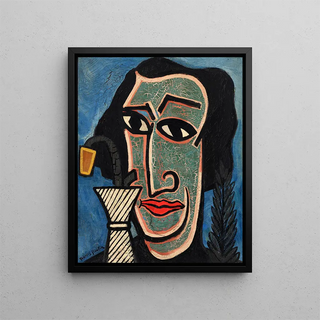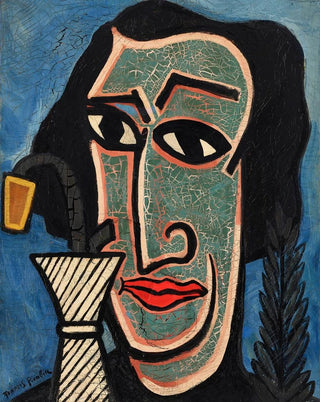Spanish Pot Art print - Francis Picabia


View from behind

Frame (optional)
In the vibrant world of modern art, some artworks stand out for their boldness and their ability to transcend conventions. "Spanish Pote" by Francis Picabia embodies this uniqueness, offering a fascinating window into the creative spirit of the early 20th century. Picabia, an iconic figure of Dadaism and Surrealism, manages to capture the essence of a rapidly changing era, where art becomes a playground for experimentation and provocation. This piece, both playful and enigmatic, invites viewers to reflect on notions of identity and culture, while celebrating the richness of imagination.
Style and uniqueness of the work
The style of "Spanish Pote" is characterized by a daring approach and a blend of techniques that challenge traditional expectations. Picabia plays with shapes and colors, creating a dialogue between abstraction and figuration. The elements that compose the artwork seem both familiar and strange, evoking a world where the boundaries between reality and imagination blur. The vibrant palette, imbued with warm and cool nuances, reinforces this sense of dynamism and movement. Every brushstroke, every meticulously orchestrated detail, testifies to an ongoing quest for novelty and originality. In this way, "Spanish Pote" proves to be an emblematic work, a true visual manifesto of modernity, which continues to fascinate and provoke thought.
The artist and his influence
Francis Picabia, born in 1879 in Paris, is an essential figure of modern art. His artistic journey is marked by notable stylistic evolutions, oscillating between Dadaism, Surrealism, and abstraction. Influenced by the avant-garde movements of his time, Picabia stands out for his ability to juggle genres and techniques, while maintaining a deeply personal approach. His work, rich and varied, questions artistic conventions and invites reflection on the role of art in society. Picabia successfully inspired many contemporary artists, leaving an indelible mark on the artistic landscape of the 20th century.

Matte finish

View from behind

Frame (optional)
In the vibrant world of modern art, some artworks stand out for their boldness and their ability to transcend conventions. "Spanish Pote" by Francis Picabia embodies this uniqueness, offering a fascinating window into the creative spirit of the early 20th century. Picabia, an iconic figure of Dadaism and Surrealism, manages to capture the essence of a rapidly changing era, where art becomes a playground for experimentation and provocation. This piece, both playful and enigmatic, invites viewers to reflect on notions of identity and culture, while celebrating the richness of imagination.
Style and uniqueness of the work
The style of "Spanish Pote" is characterized by a daring approach and a blend of techniques that challenge traditional expectations. Picabia plays with shapes and colors, creating a dialogue between abstraction and figuration. The elements that compose the artwork seem both familiar and strange, evoking a world where the boundaries between reality and imagination blur. The vibrant palette, imbued with warm and cool nuances, reinforces this sense of dynamism and movement. Every brushstroke, every meticulously orchestrated detail, testifies to an ongoing quest for novelty and originality. In this way, "Spanish Pote" proves to be an emblematic work, a true visual manifesto of modernity, which continues to fascinate and provoke thought.
The artist and his influence
Francis Picabia, born in 1879 in Paris, is an essential figure of modern art. His artistic journey is marked by notable stylistic evolutions, oscillating between Dadaism, Surrealism, and abstraction. Influenced by the avant-garde movements of his time, Picabia stands out for his ability to juggle genres and techniques, while maintaining a deeply personal approach. His work, rich and varied, questions artistic conventions and invites reflection on the role of art in society. Picabia successfully inspired many contemporary artists, leaving an indelible mark on the artistic landscape of the 20th century.






